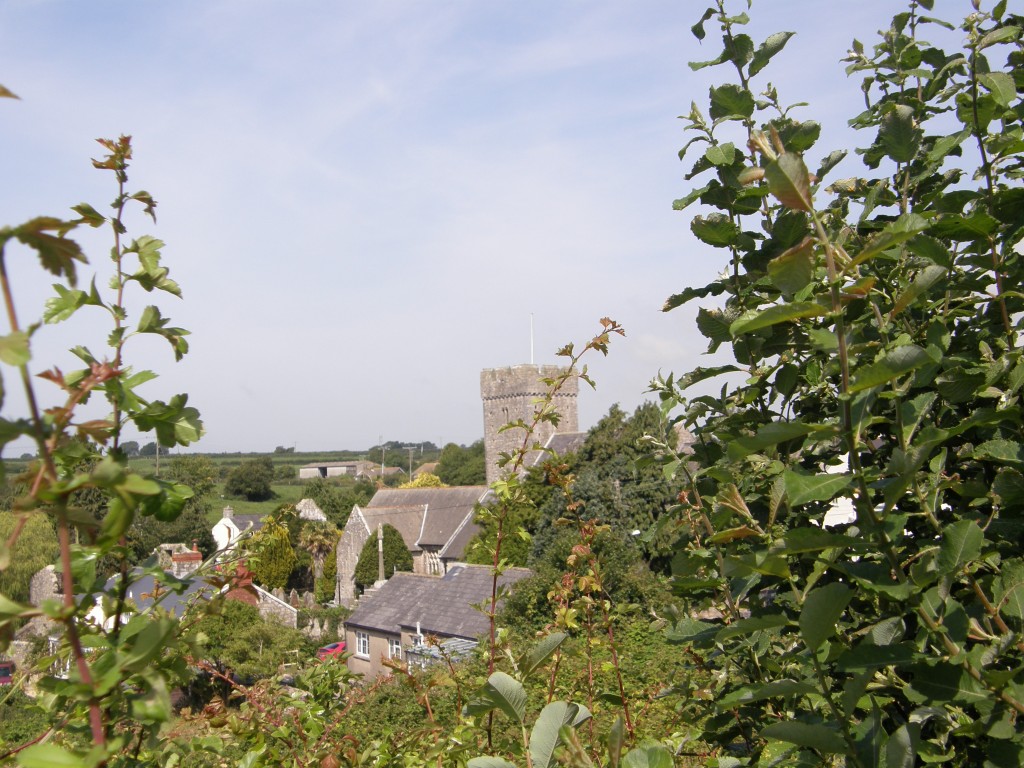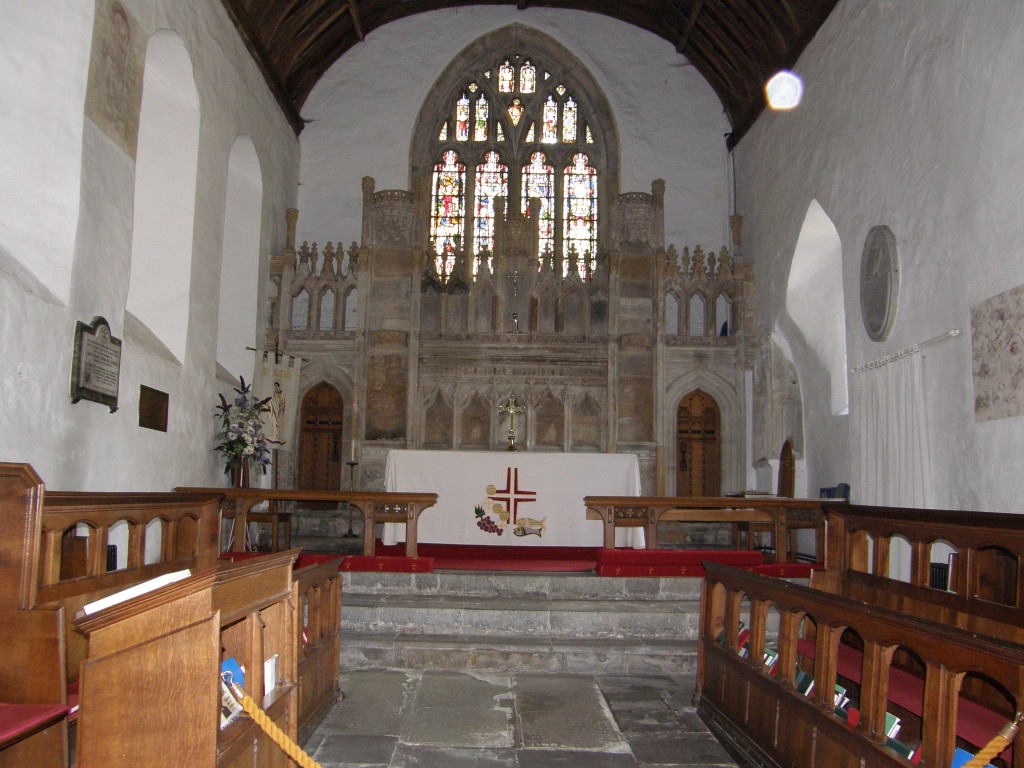Noswaith dda!
Noswaith dda is Welsh for “Good evening” – do not try to pronounce it – whatever you guess will be wrong, I assure you.
I drove a circle through the Brecon Beacons today – I almost drove to St. David’s – but five hours of driving (two to get there from where I was just west of Swansea and three to get back from there to my B&B in Hay-on-Wye) didn’t seem like a good idea, so I didn’t. Instead I went to St. Illtuds in Llantwit Major, then to the Penderyn Distillery, then to Llanthony Priory … and then walked the streets of Hay-on-Wye and looked at lots of old books. It was overwhelming, even for a bibliophile like me … there are too many books … and some of the shops are simply disorganized. Many have the books categorized by subject, shelved alphabetically by author, etc. But some are just disorganized heaps of books – I think even the owners don’t know where anything is.
I was disappointed in St. Illtud’s Church and the ruins at Llantwit Major. The modern Welsh-English name comes from the old Welsh name Llanilltud Fawr. Llan means “monastery” and you can see St. Illtud’s name in the rest of that first word. The second word, fawr, means “great”. So the name is something like “Illtud’s Great Monastery” which was founded in the early 5th Century by St. Illtud as a center of learning … but it’s not so great any longer.
This is a very important site in Celtic Christian history and it’s not cared for very well at all. The monastic community here, over which St. Illtud and St. Samson were priors, was once so important in the formation of monks, priests, missionaries, and bishops that it has been called “The University of Celtic Saints.” St. David of Wales was educated and ordained there, and he is not the only one: in addition to St. David, St. Samson, St. Paul Aurelian, St. Gildas, St. Tudwal, St. Baglan and King Maelgwn ap Cadwallon (King of Gwynedd and apparently High King of Wales in the middle of the 5th Century) are said to have studied at the Cor Tewdws or “divinity school”.
The Scots and the Irish seem to have a sense of reverence for their ancient Christian monastic sites, but apparently not so the Welsh (or at least not the people of Llantwit Major). Although inside the church there is a poster about a fund raising effort to preserve what’s left and build a visitor center, it’s pretty clear it’s not going anywhere – the poster is a few years old. And in the old chapel, there are dustbins and a composting thing set up….
Here are some pictures of the Church of St. Illtud’s and what remains of the medieval buildings that were once found at this site. Of course, the earlier Celtic site has long since disappeared. First, the church as seen from the town’s public car park and then a couple of photos of the building from the church yard.
There is a ruined chapel affixed to the functioning church directly out the west door; in this chapel are currently housed dustbins (trash cans, to an American) and a green plastic composting container!
On the grounds was also a ruined chantry which has now been turned into a memory garden:
Inside the church there are some stones with Celtic carving and Latin inscriptions which may date from the early Celtic monastery:
And, of course, the Victorians got to the place and their influence is seen in the chancel of the church and the reredos:
After surveying the church at Llantwit Major (which didn’t really take as much time as I thought it would), I gave serious consideration to driving the 101 miles from there to St. David’s where the primatial Cathedral of the Church in Wales is located. It really is a lovely cathedral and there are well-preserved ruins of a monastery founded by St. David there. (Here is a link to the Cathedral’s website.) In fact, I got onto the M4 motorway and started to do just that, but a little bit west of Swansea, stopping for petrol and a Diet Coke, discretion got hold of me and I realized that I really didn’t want to spend two hours driving there and then to face three hours getting back to Hay-on-Wye. So I went back to my original plan, which was to drive to the village of Penderyn and visit the only whisky distillery in Wales. (See My Day in Wales (Part 2) for more about that.)
(Later in the day I visited Llanthony Priory, another monastic ruin, in the Black Mountains south of Hay-on-Wye. Read My Day in Wales (Part 3) for that story and more photos.)











OK, what is a Chantry????
Loved the photo of the stone Celtic cross
Just received latest issue of ChurchLife and learned that Bishop Mark is learning to play the bagpipes.
Kim, a chantry is a building on private land or a dedicated area within a greater church, set aside or built especially for and dedicated to the singing of votive Masses for a specified purpose, generally for the soul of a deceased donor or patron. I don’t know the details of the chantry at St. Illtuds.
Eric, Thank you for the description of a chantry. Makes more sense now